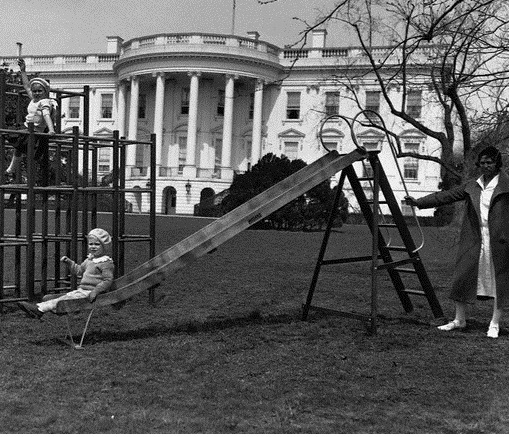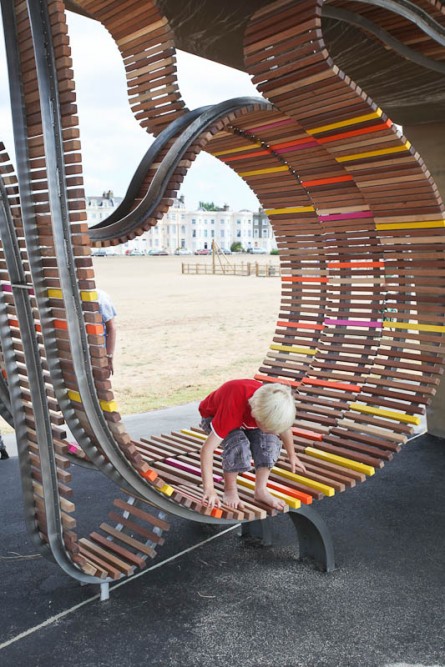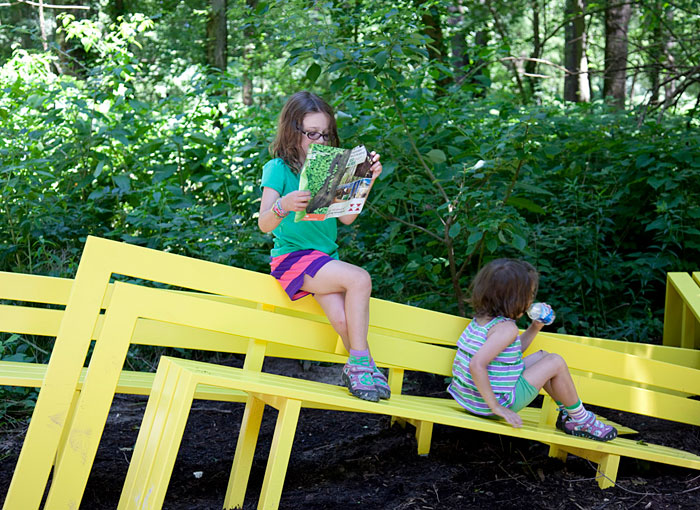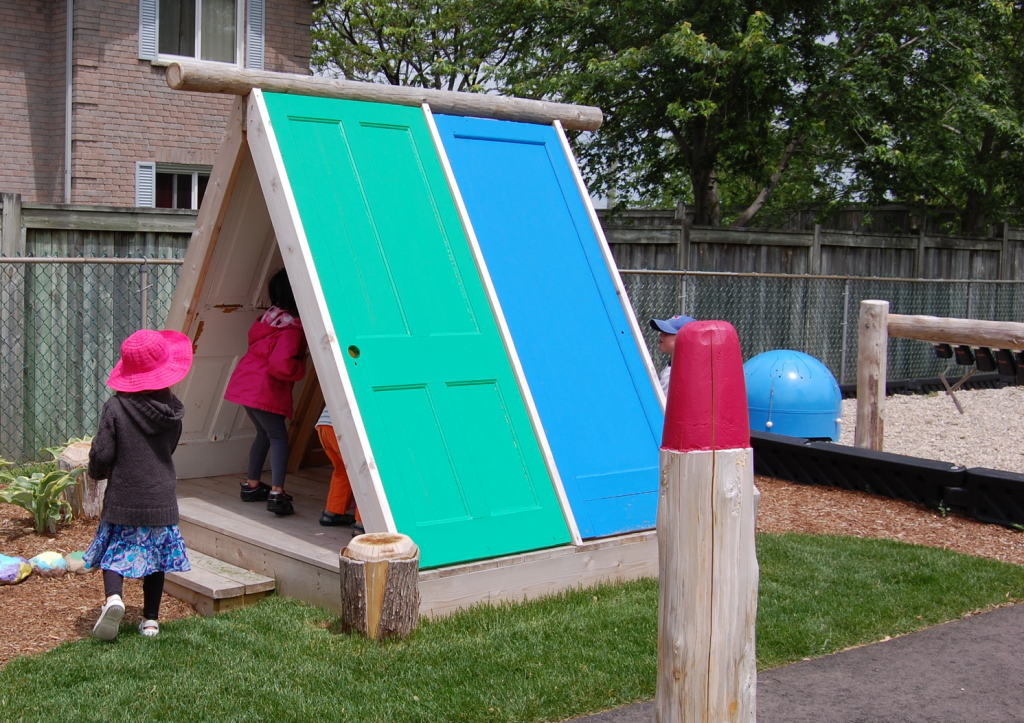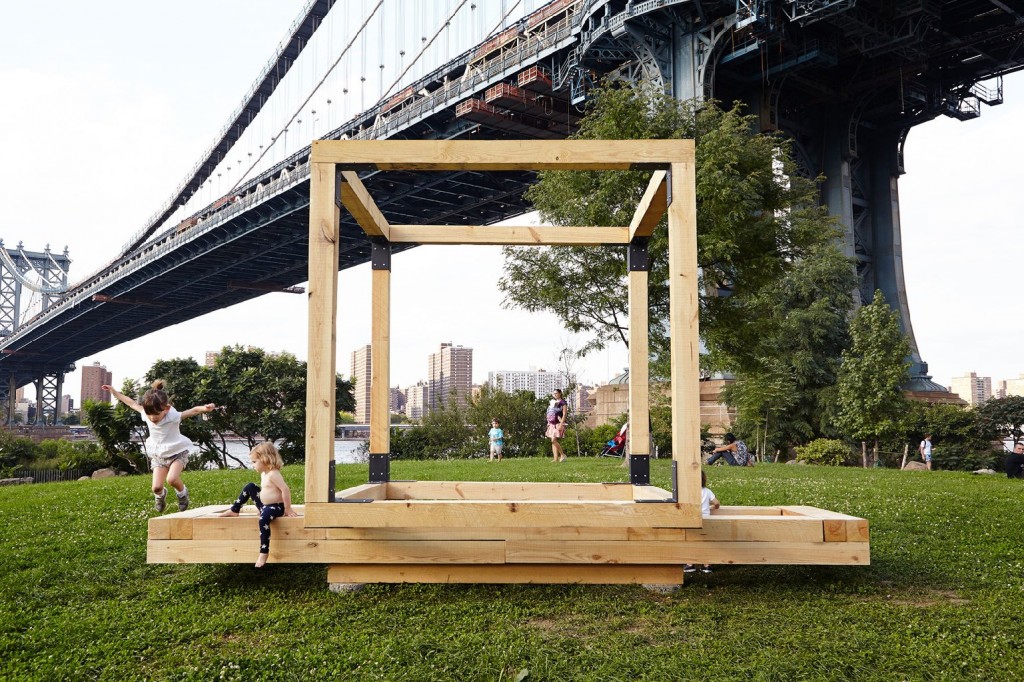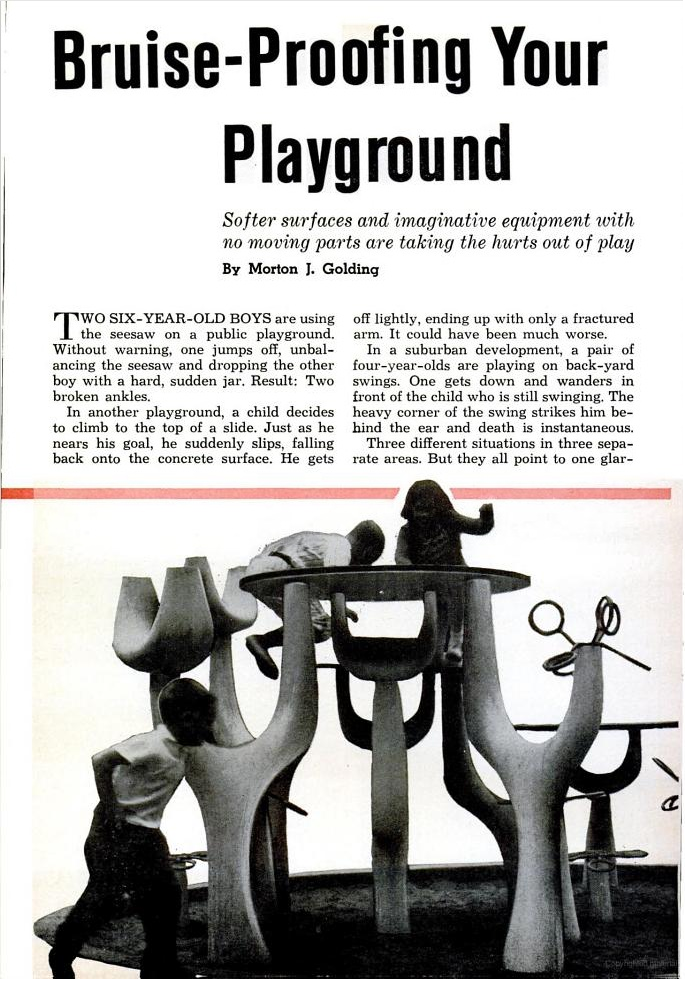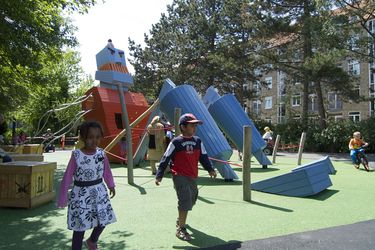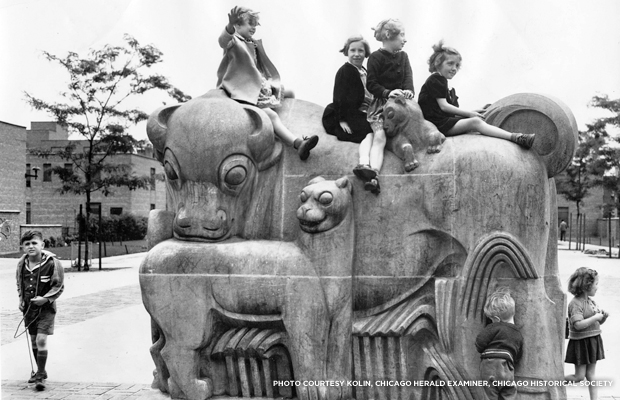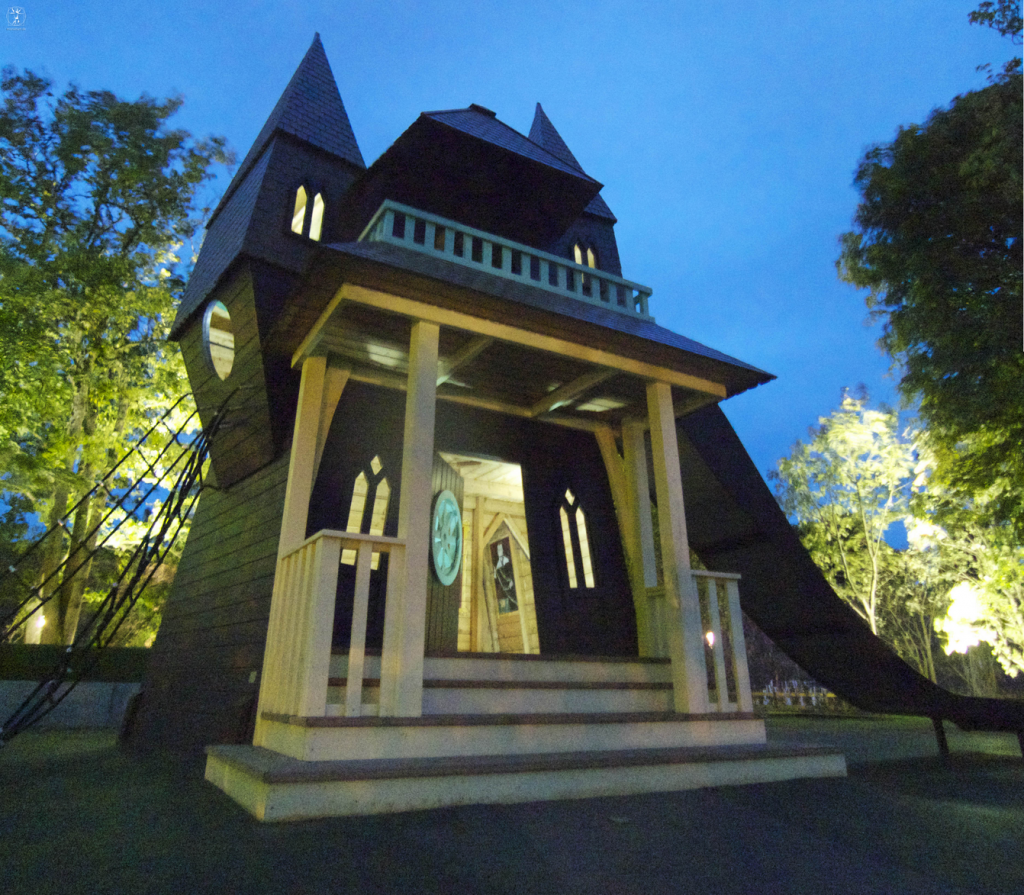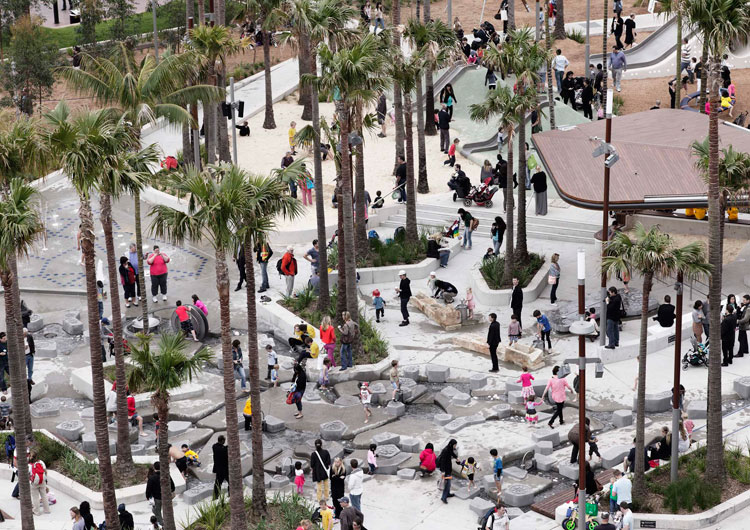
So I’ve been meaning to post this playground for some time but every time I sat down to write it up something kept tickling at the back of my mind. I felt like I’d seen it somewhere before and finally this week I found the doppelganger in a set of copies I made from Gerhard Aick’s 1962 Die Befreiung Des Kindes at the British Library a couple of years ago. Unfortunately though, the book gave no information on the playspace , the designer or whether it was even installed. But it’s clearly been resurrected in Sydney. See the resemblance in the angular biomorphic forms (ref that planting bed at the lower left)?
I particularly like how this space uses traditional nature play elements–like streams, hills and ‘boulders’–but in a more stylized, architectonic way that is durable and well-suited to the very urban setting.
And notice that they didn’t shy away from sand.
“ASPECT Studios, one of Australia’s leading landscape architecture companies, has designed a new public domain precinct and urban play space and in Sydney’s Darling Harbour. Commissioned by the Sydney Harbour Foreshore Authority (SHFA) and Lend Lease, the project is now known as Darling Quarter is a 1.5 hectare place-making project for Sydney with a public park, new cafés, restaurants, bars, 6 star green star commercial buildings (Commonwealth Bank Place), and an innovative children’s playground as its centre piece. At over 4000m² it is the largest play space in the Sydney CBD and with its interactive water play facilities it will strengthen Darling Harbour’s reputation as the most visited destination in Australia.”
More developers should think of using an innovative children’s playground as the centerpiece of their work!
Images from ASPECT Studio; see more of their playground work here.
The post Darling Quarter Playscape, Sydney Australia, Aspect Studios, 2011 appeared first on Playscapes.
